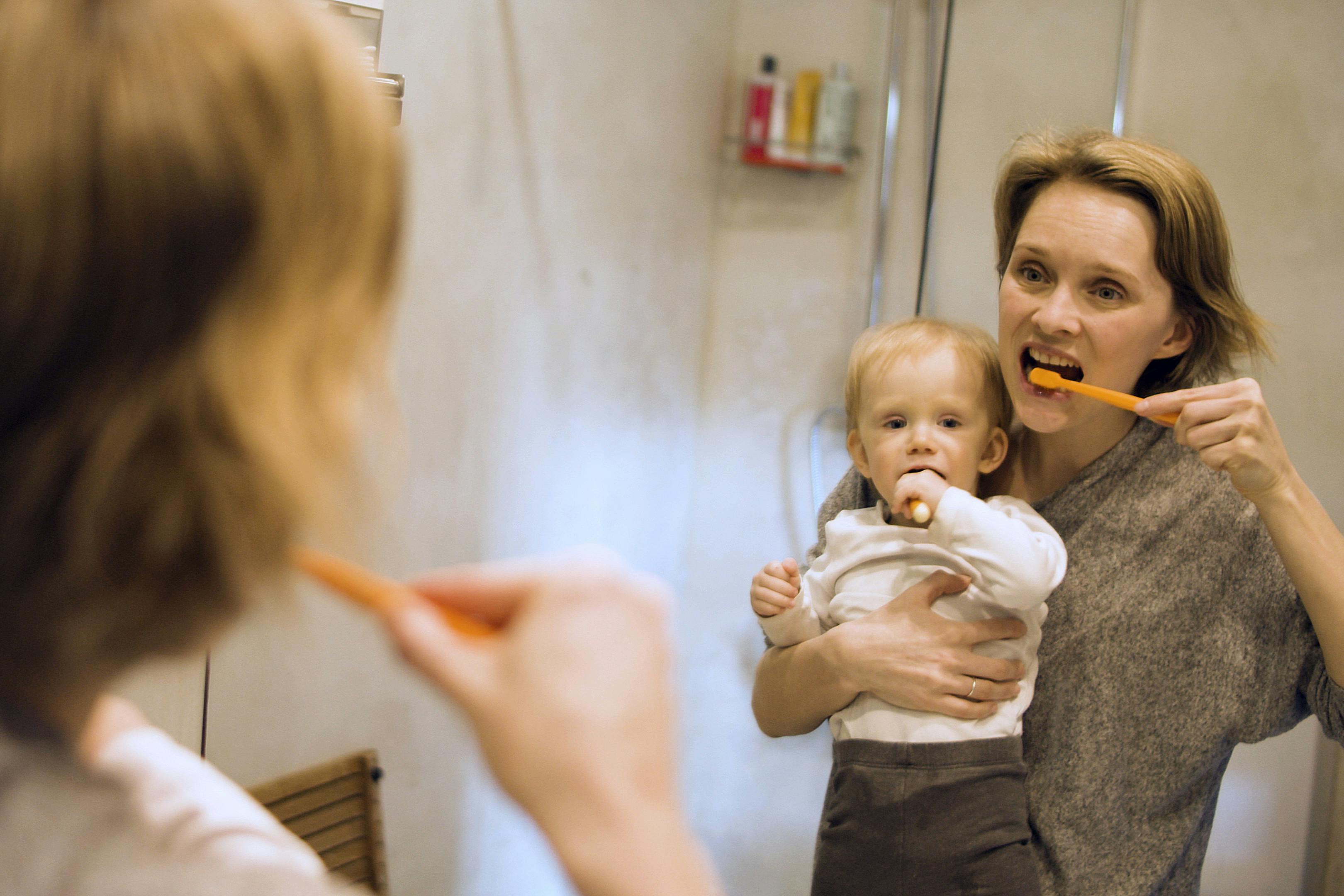When it comes to your child’s oral health, it’s important to consider whether or not you should fill cavities in their baby teeth. While baby teeth are eventually lost, they are still important for helping your child chew and speak properly. Furthermore, decay in baby teeth can lead to infection and spread to the adult teeth that will eventually replace them. Therefore, determining if and when to fill cavities in baby teeth is an important topic for any parent.The benefits of filling cavities in baby teeth can be significant. Filling a cavity helps prevent further decay and infection from spreading to other parts of the mouth. It also helps maintain the natural appearance of the teeth, and can help protect a child’s developing adult teeth. In addition, filling a cavity can help improve a child’s overall oral health and reduce their risk of developing other dental health problems in the future.
What Are The Risks Of Filling Cavities In Baby Teeth?
The risks of filling cavities in baby teeth may include pain, infection, inflammation, and further decay. Although it is possible to fill cavities in primary teeth, the risk of complications increases as the teeth are still developing. If a cavity is left untreated, the tooth can become infected and cause severe pain or even abscesses. Additionally, if a cavity is not filled the tooth can weaken and fracture due to decay.
Filling a cavity in a baby tooth may cause discomfort and pain as the tissue around the tooth must be manipulated to fill it. Additionally, it is possible for bacteria to enter through the filling material and cause infection or inflammation around the tooth. If an infection does occur, antibiotics may need to be prescribed and further treatment may be necessary to restore the tooth’s health.
It is important for parents to understand that while there are risks associated with filling cavities in baby teeth, these risks are usually outweighed by the benefits of restoring the function of the affected tooth and protecting it from further damage or decay. A dentist can help parents assess whether their child’s cavity should be filled or monitored for further development before making a decision about treatment.
When Should You Consider Filling Cavities In Baby Teeth?
Cavities in baby teeth can be a cause for concern for parents, as they may be wondering when it’s time to fill the cavities. Generally speaking, cavities in baby teeth should be filled as soon as possible. This is because baby teeth are smaller than adult teeth and the decay process can spread quickly, causing even more damage. Also, the earlier the cavity is filled, the less likely it is that your child will experience any pain or discomfort associated with it.
Another reason to consider filling cavities in baby teeth sooner rather than later is that it helps protect your child’s permanent teeth. Baby teeth hold a place for adult teeth and when these are lost too early due to decay or other issues, it can create a gap which could affect the development of permanent teeth. Filling cavities in baby teeth helps ensure that your child’s mouth remains healthy and that their permanent teeth come in straight and properly aligned.
It’s important to note that not all cavities require filling; some may only need monitoring or preventative measures such as fluoride treatments or sealants. Your dentist will be able to advise you on whether your child needs a filling or not based on their individual situation. If you have any questions about when to consider filling cavities in baby teeth, it’s best to consult your dentist for more information.
Preventing Cavities in Baby’s Teeth
Cavities are a common dental problem, and babies can also develop cavities in their teeth. To prevent cavities in your baby’s teeth, it is important to practice good oral hygiene and have regular check-ups with the dentist. Here are some tips to help you keep your baby’s teeth healthy:
• Brush your baby’s teeth twice daily with a soft-bristled toothbrush and toothpaste designed for children. Make sure to brush the inside, outside, and chewing surfaces of each tooth.
• After meals and snacks, clean your baby’s gums with a clean washcloth or infant toothbrush by gently rubbing the cloth or brush over the gums.
• Avoid putting your baby to bed with a bottle filled with anything other than water. If they need something to drink before bedtime, try giving them water instead of other sugary drinks like juice or milk.
• Limit sugary snacks and drinks throughout the day and opt for healthier options like fruits, vegetables, cheese cubes, whole wheat crackers, etc.
• Encourage your child to drink plenty of water during the day as this helps rinse away plaque-causing bacteria from their teeth.
• Visit the dentist regularly for check-ups and professional cleanings to ensure that any problems are caught early on.
By following these simple tips, you can help keep your baby’s teeth healthy and cavity-free!
What Are The Different Types Of Fillings For Baby Teeth?
When it comes to kids’ dental health, parents often have one primary concern: are the baby teeth going to be strong enough to last until the permanent teeth come in? Fortunately, there are a number of different types of fillings for baby teeth that can help protect and strengthen them. These include: silver amalgam fillings, composite resin fillings, and glass ionomer fillings.
Silver amalgam fillings are composed of a mixture of metals that create a strong bond with the tooth’s enamel, making them ideal for protecting baby teeth from decay. Although this type of filling is less aesthetically pleasing than others, it is extremely durable and can last up to 15 years without needing replacement.
Composite resin fillings are becoming increasingly popular due to their natural appearance and strength. These fillings are made from a combination of plastic and glass particles which form a hard bond with the tooth’s enamel. They are also much more aesthetically appealing than silver amalgam fillings as they can be color-matched to the child’s existing teeth.
Glass ionomer fillings use a mixture of acrylic and fluoride to create an extremely strong bond with the tooth’s enamel. They offer great protection against decay and cavities while also being aesthetically pleasing as they can blend in with the child’s existing teeth color. Furthermore, glass ionomer fillings release fluoride over time which helps protect against further decay.
No matter what type of filling is used, it is important that parents ensure their children practice good oral hygiene habits such as brushing twice daily and flossing once daily in order to maintain healthy baby teeth until their permanent teeth come in.

Filling a Cavity in a Baby Tooth
The cost of filling a cavity in a baby tooth can vary considerably, depending on the severity of the tooth decay, the location of the cavity, and other factors. Generally speaking, you can expect to pay anywhere from $50 to $200 for a baby tooth filling. The cost may be higher if the cavity is deep and requires additional steps like root canal therapy or crowns. It’s also important to note that many dental insurance plans do not cover fillings for baby teeth, so you may need to pay out-of-pocket for the procedure.
When it comes to treating cavities in baby teeth, the best approach is prevention. Regular visits with your dentist and proper oral hygiene habits can help keep cavities from forming. If your child does develop a cavity, it’s important to have it filled as soon as possible so that it doesn’t spread and cause more serious issues down the line. Your dentist will be able to provide advice on what type of filling is best for your child’s tooth and will help make sure that it is properly cared for after the procedure.
Pain Management During the Filling Process for a Baby Tooth
Pain management is an important consideration during dental procedures, especially when it comes to baby teeth. Cavity fillings for baby teeth can be done with minimal discomfort using a variety of techniques. Local anesthesia is often used to numb the area around the tooth being filled, and in some cases, nitrous oxide (laughing gas) may be used to help reduce anxiety and pain. Additionally, topical anesthetics may be applied to the gums near the affected tooth.
In certain cases, where a baby tooth is severely decayed or damaged, a pulpotomy (root canal) may be necessary. To minimize discomfort during this procedure, dentists use a combination of local anesthesia and/or nitrous oxide as well as other sedation techniques if necessary. Some dentists also offer patient-controlled analgesia (PCA), which allows patients to self-administer medication that numbs the area around the tooth prior to the procedure.
Parents should also talk to their child’s dentist about any concerns they have regarding their child’s comfort level during dental procedures. The dentist may suggest additional ways to make the procedure more comfortable for the child such as distraction techniques or relaxation methods. Ultimately, discussing any questions or concerns with your child’s dentist can help ensure that your child has a positive experience and gets the care they need for their baby teeth.
Will My Child Need Anesthesia To Fill A Cavity In Their Baby Tooth?
When it comes to deciding whether or not your child will need anesthesia to fill a cavity in their baby tooth, the answer is usually no. In most cases, a local anesthetic is not required for a baby tooth filling. This is because the nerve endings in baby teeth are not well developed, which means they don’t feel much pain when the dentist cleans and fills the cavities.
However, some children may still require an injection of local anesthetic if they have extensive decay or if they are very anxious about going to the dentist. If your child needs an injection, it should be administered using a very small needle and in a comfortable position. The injection should be done carefully so that your child doesn’t feel any discomfort or pain.
In some cases, a dental sedative may also be recommended for children who are too anxious or fearful about getting their cavity filled. Sedation can help make the experience more comfortable and less stressful for both you and your child.
If you have any questions about whether or not your child will need anesthesia to fill their cavity, it’s best to talk with your dentist before scheduling an appointment. Your dentist can give you advice on how best to prepare your child for their visit and can discuss any concerns you might have about anesthesia.
It’s important to remember that filling cavities in baby teeth is essential for maintaining good oral health. Filling cavities in baby teeth helps prevent future tooth decay and keeps tooth development on track until permanent teeth come in.

Conclusion
It is important to consider many factors when deciding whether or not to fill cavities in baby teeth. While baby teeth are only temporary, they are essential for proper development and can also help to reduce the risk of cavities in adult teeth. Ultimately, it is best to discuss the pros and cons of filling baby teeth with a qualified dentist who can provide guidance and advice tailored to your child’s specific needs. Taking into account all of these considerations can ensure that you make an informed decision that is best for your child’s dental health.
In summary, parents should consider their child’s age, the degree of decay, the cost, and the risk of future cavities when deciding whether or not to fill cavities in baby teeth. While there are some benefits to having cavities filled in baby teeth, it is important for parents to discuss their options with a qualified dentist before making any definitive decisions.
